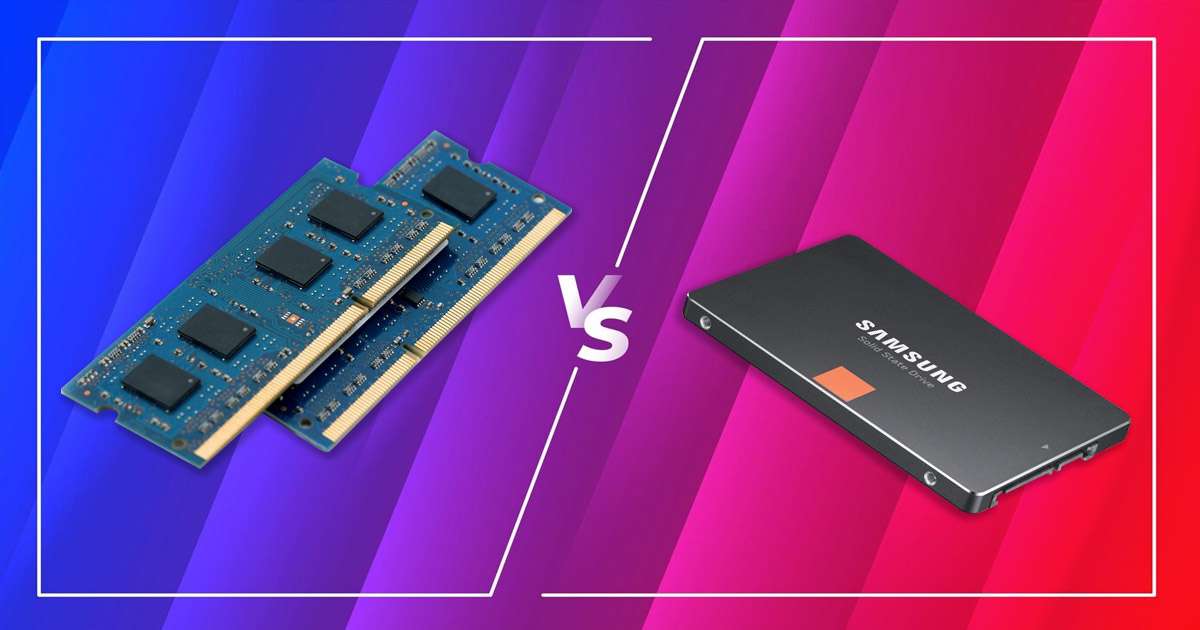RAM vs. SSD: Find the Perfect Boost for Your Computer’s Performance

When upgrading your computer, you’ll often hear about two important components: RAM (Random Access Memory) and SSD (Solid State Drive). Both are essential for the performance of your computer, but they do distinct functions. To help you choose which upgrade your computer needs, you need to know the differences between RAM and SSD, compare their roles, and how they affect system performance.
What is RAM?
RAM stands for “Random Access Memory.” It is a type of computer memory that saves data temporarily while your computer is on. It’s used for active tasks and helps your computer quickly access and process data.
Key Features of RAM
- Speed: RAM is very fast. It helps the Central Processing Unit (CPU) quickly get to the information that it needs right away.
- Volatility: RAM is volatile, which means that when you turn off your computer, it erases everything that is in it. This is why you should save your work before you turn off your computer.
- Function: RAM is used for tasks that need immediate attention, such as running programs and processing data. It connects the CPU to the files at a very fast rate.
What is SSD?
SSD, which stands for “Solid State Drive,” is a type of storage device that stores information in flash memory. SSDs are faster and more reliable than standard Hard Disk Drives (HDDs) because they don’t have any moving parts. It’s vital to know that SSDs don’t lose data when the computer is turned off.
Key Features of SSD
- Speed: SSDs are much faster than HDDs. They provide quick boot times, faster application launches, and speedy file transfers.
- Non-volatility: SSDs are great for long-term storage because they keep data even when the power is off.
- Function: SSDs store your operating system, applications, and files. They provide a fast way to access and save data.
What is the difference between RAM and SSD?
SSD is not the same as RAM. Both are important for the performance of a computer, but they do distinct tasks and have different features:
Purpose and Function
The main difference between SSD and RAM is what they do. Random Access Memory (RAM) stores data temporarily while your machine is running. The software speeds up and improves the efficiency of your CPU.
Solid-state drives (SSDs) are better for long-term saving. They keep your operating system, applications, and personal files. While SSDs are slower than RAM, they still make your computer faster by reducing load times and speeding up data access.
Speed and Performance
When you compare RAM and SSD, RAM is much faster. RAM works in gigabytes per second (GB/s), while SSDs work in hundreds or thousands of megabytes per second (MB/s). This makes RAM better for tasks that need quick access to data, like running multiple programs at once.
SSDs are slower than RAM but faster than traditional hard drives (HDDs). They improve your computer’s performance by making boot times shorter and file retrieval faster.
Volatility vs Non-volatility
RAM is volatile, which means that when you turn off your computer, it erases everything that is in it. This is for short-term data that needs to be viewed quickly. SSDs, on the other hand, don’t lose information when the computer is turned off. This makes SSDs ideal for storing your operating system, apps, and files long-term.
Storage and Cost
SSDs usually have a lot more storage space than RAM. Most computers have between 8GB and 64GB of RAM, while SSDs can range from 256GB to several terabytes (TB). However, SSDs are more expensive per gigabyte than RAM, so computers usually have more storage space in SSDs compared to RAM.
Lifespan
The lifespan of RAM and SSDs also differs. RAM is very durable and can last many years without any issues. It usually needs replacing only if it becomes faulty.
SSDs have a limited number of write cycles before they begin to wear out. However, modern SSDs are designed to last a long time and often come with warranties of 5 to 10 years. The lifespan of an SSD depends on how much it is used and the quality of the drive. Regularly monitoring your SSD’s health can help ensure it continues to perform well.
How do RAM and SSD affect your computer’s speed?
Both RAM and SSD make a big difference in how fast your computer feels:
RAM’s Impact:
- Juggling Tasks: More RAM lets you keep more apps open at the same time.
- Smooth Operation: It helps big programs, like video editors, run smoothly.
- Web Browsing: If you have more RAM, you can open more computer tabs at once without slowing down.
SSD’s Impact:
- Quick Startup: Your computer boots up faster with an SSD.
- Speedy programs: Apps on an SSD open more quickly.
- Fast File Moving: Copying large files happens much faster with an SSD.
How do RAM and SSD work together?
Even though RAM and SSD serve different purposes, they work together to make your computer faster. When you open an app, it loads from the SSD into the RAM. This is because RAM lets you get to information quickly, which makes the program run smoothly.
If your computer has too little RAM, it might use some of the SSD as extra memory, known as virtual memory. This helps manage multiple tasks, but relying too much on virtual memory can slow things down compared to having enough RAM.
Should you choose SSD or RAM when upgrading your computer?
Deciding whether to upgrade RAM or SSD depends on what you need.
When to Upgrade RAM:
- Multitasking: If your computer slows down when running many applications, adding more RAM can help.
- Heavy Tasks: For demanding activities like video editing or gaming, extra RAM can boost performance.
- System Lag: If your computer struggles with slow performance during intense tasks, more RAM might be necessary.
When to Upgrade SSD:
- Boot Times and File Transfers: If your computer starts up slowly or takes a long time to move files, upgrading to a faster SSD or adding more storage can improve speed.
- Storage Space: If you need more room for files and applications, getting a larger SSD can give you the extra space you need.
- Replacing HDD: Switching from an old hard drive (HDD) to an SSD can make your computer start up faster and open applications more quickly.
Find the right upgrade for your computer.
RAM and SSDs both make your computer faster, but in different ways. RAM helps with quick, temporary tasks, letting you run more apps smoothly. SSDs provide fast, long-term storage for your system, programs, and files, speeding up boot times and file transfers. If you need to improve how many tasks your computer can handle at once, upgrade the RAM. If you want faster start-up times, quicker file access, or more storage, upgrading the SSD is the way to go.

